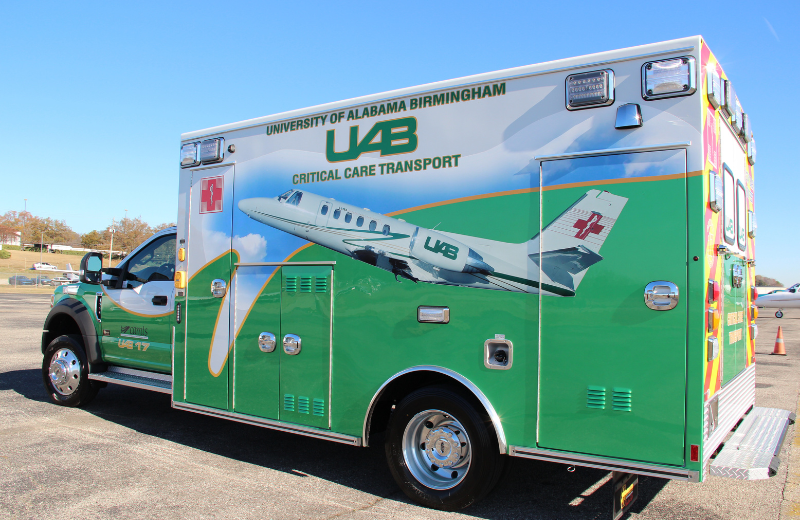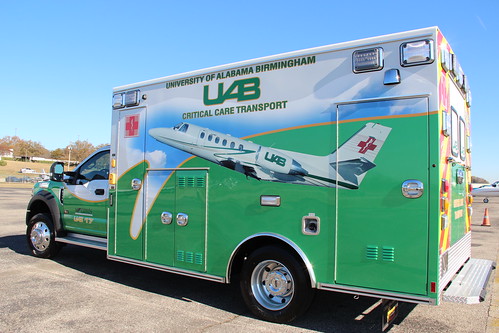
UAB Medicine’s Critical Care Transport (CCT) service provides airborne and ground medical care for patients with serious conditions who need to be moved from one medical facility to another. It celebrated 40 years of service in March 2023, and in October it added a fifth ground transport vehicle that features the latest technology in transport capability and safety.
The UAB CCT team has been serving patients since 1983. It involves much more than getting patients from point A to point B. Critical patients being transferred to UAB Medicine for advanced care need the same resources that are available in a hospital intensive care unit (ICU), and they usually need them immediately. They also need a care team made up of ICU-trained professionals, including neonatal specialists.
ICU on wheels
Whether on the ground or in the air, the CCT team begins providing care and stabilizing the patient’s condition well before arriving at UAB Hospital. The CCT ambulances, or ground transport units, are designed to function as ICUs on wheels. The newest vehicle is designated as UAB 17 and features state-of-the-art advancements, according to Wesley Gay, RRT, a respiratory therapist who serves as the CCT manager.
“It’s new in every way,” Gay said of the latest vehicle. “We have extra seating, more power for critical equipment, a UV disinfection system, and a number of improved safety features. For example, the mounts in the vehicle that hold equipment and tanks and other devices are now rated for higher g-forces than those in our transport jet.”
Depending on the transport, the on-board team may include a critical care nurse or neonatal nurse practitioner, a respiratory therapist, and a physician. CCT Director India Alford, RN, says the new ambulance enhances the team’s ability to provide the best possible care.
“Any medical team likes having reliability and the most up-to-date equipment, and the ambulance gives our transport team that and more,” Alford said. “That’s important in a setting where you have a lot going on, where you have patients on board that the team is helping get prepped for an immediate surgical procedure, and you are in a moving vehicle. It’s good to know you are working with the newest and the best.”
CCT Medical Director Kevin Barlotta, M.D., said UAB 17 “is a welcome addition to a fleet that services so many.”
By the numbers
Since launching in 1983, CCT has had a tremendous local, regional, and international impact on patient care. The highlights below help showcase the team’s operational excellence:
- Nearly 61,000 patients transported since 1983, and 2023 was a record-breaking year with 2,728 transfers
- First hospital-based transport program in Alabama and the surrounding five-state area to earn accreditation (1999)
- Has transported patients from 48 U.S. states and 38 countries
- First non-military aircraft/critical care transport program to add a liquid oxygen system, which allows cross-country transport of patients on ventilators
- CCT’s team of neonatal nurse practitioners and registered respiratory therapists is contracted to serve all neonatal ICUs in the region.
- Each CCT ambulance averages 44,000 miles of travel each year.
- CCT clinical staff, coordinators, and managers share a combined 542 years of critical care transport experience.
- 21 patients evacuated by air from New Orleans following hurricanes Katrina and Rita in 2005
- Rescued eight premature babies from Hurricane Gustav in 2008
- A UAB CCT flight was the first United States civilian flight authorized in Cuban airspace since the 1959 revolution.
- First western medical team to land in Russia
- In 2020, UAB CCT became the first to connect a patient to a life-sustaining ECMO machine outside of a hospital setting.
Learn more about UAB Medicine Critical Care Transport.

